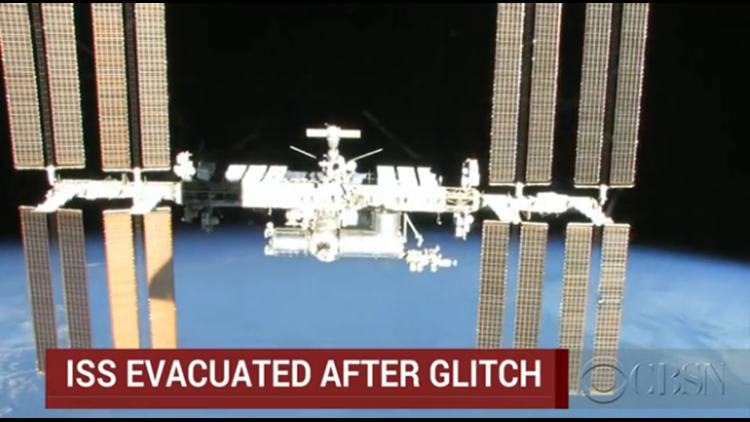CBS News – A problem in the U.S. segment of the International Space Station on Wednesday prompted its six-person crew to quickly lock it up and move to a Russian module, but they aren’t in danger, Russian and U.S. officials said.
“The space station crew is safe,” NASA spokesman Bob Jacobs said.
According to a NASA official, a “very small” ammonia leak was detected around 4:20 a.m. EST, CBS News space consultant William Harwood reports. The crew donned masks as a routine protective measure, moved into the Russian section of the space station and closed hatches to isolate the U.S. section.
Russia’s space agency Roscosmos said in a statement that a “leak of harmful substances from the cooling system” prompted the crew to isolate the American module.
“The crew is safe and is in the Russian segment now,” it said in a statement, adding that mission control experts in Moscow and Houston quickly and efficiently cooperated to ensure the crew’s safety.
While Roscosmos said there was a leak, NASA said in a statement broadcast on its online television station there was still “no concrete data that suggests that there was in fact an ammonia leak.”
“We saw an increase in water loop pressure, then later saw a cabin-pressure increase that could be indicative of an ammonia leak in the worst case scenario, so we protected for the worst case scenario and isolated the crew is the Russian segment of the space station while the teams are evaluating the situation,” Jacobs said.
NASA tweeted that the problem was “starting to look like a false indication, either a faulty sensor or computer relay” but that the problem was still be assessed.
The Tass news agency reported that just about one third of ammonia was left in the coolant system at the U.S. module and the rest has leaked out.
It quoted Roscosmos chief Oleg Ostapenko that the situation was still being examined, but “evacuation is not on the agenda.”
The space outpost is manned by NASA astronauts Barry Wilmore and Terry Virts, Russians Elena Serova, Alexander Samoukutyaev and Anton Shkaplerov and European Space Agency astronaut Samantha Cristoforetti.
Ammonia is used as the space station’s primary coolant to disperse heat generated by its electronics, but it is not allowed inside the station.
Instead, the U.S. segment’s computers sit on “cold plates” that use chilled water circulating through tubes to carry off the heat. That water is routed through heat exchanges where the water loops come in close proximity to the ammonia lines. The ammonia then warms up and is routed to external radiators where the heat is dissipated.



